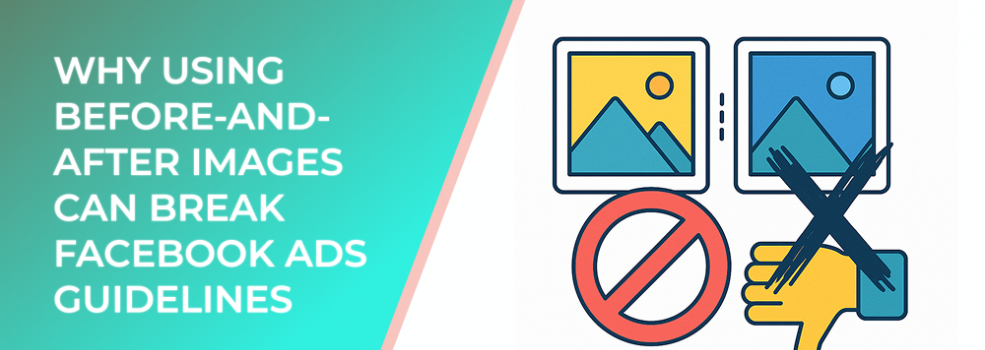Before-and-after images are a common marketing tactic, especially in industries like fitness, beauty, and health. They showcase transformation in a way that feels persuasive and relatable. However, on Facebook, this approach can quickly backfire. The platform has strict policies designed to protect users from misleading, harmful, or negative experiences. Misuse of before-and-after visuals is one of the fastest ways to get an ad rejected or even an account suspended.
Facebook’s Policy on Before-and-After Images
Facebook explicitly prohibits ads that use “before-and-after” images or images that imply unexpected or unlikely results. The reasoning is twofold:
-
Preventing Misleading Claims: Transformation photos often exaggerate or misrepresent outcomes, leading to unrealistic expectations.
-
Protecting User Experience: Such images can make users feel insecure about their own appearance or lifestyle, which violates Facebook’s policy against exploiting personal attributes.
According to Meta’s Ad Standards, ads must not depict idealized body images or promote products in a way that implies shame or inadequacy. In fact, over 45% of ad rejections in the health and beauty categories are due to violations of these content rules.
The Risks of Using Before-and-After Ads
-
Ad Rejection: Facebook’s automated review system often flags before-and-after content immediately.
-
Reduced Reach: Even if approved, ads can receive limited delivery due to negative feedback signals.
-
Account Restrictions: Repeated violations can lead to suspensions, hurting not just one campaign but your entire advertising account.
Alternatives to Before-and-After Imagery
Marketers still have many effective ways to showcase transformations without breaking rules:
-
Testimonials and Stories: Use authentic customer reviews with clear, compliant language.
-
Educational Content: Share tips, guides, or how-to videos that highlight value without visual exaggerations.
-
Lifestyle Imagery: Instead of focusing on drastic changes, show happy, confident people using your product.
-
Product Demonstrations: A video or carousel ad showing how a product works can be more engaging and policy-friendly.
For instance, campaigns that emphasize product benefits rather than extreme transformations have been shown to increase engagement rates by up to 30%, while reducing the risk of disapproval.
Best Practices to Stay Compliant
-
Review Facebook’s ad policies regularly, as guidelines evolve.
-
Avoid content that could be interpreted as body-shaming or unrealistic.
-
Test alternative creative formats such as short videos, animations, or user-generated content.
Conclusion
While before-and-after images may seem like powerful tools, they come with significant risks in Facebook advertising. By focusing on compliant, user-friendly content, marketers can not only avoid penalties but also build campaigns that resonate more positively with their audience. Long-term success lies in creativity that inspires without exploiting insecurities.

